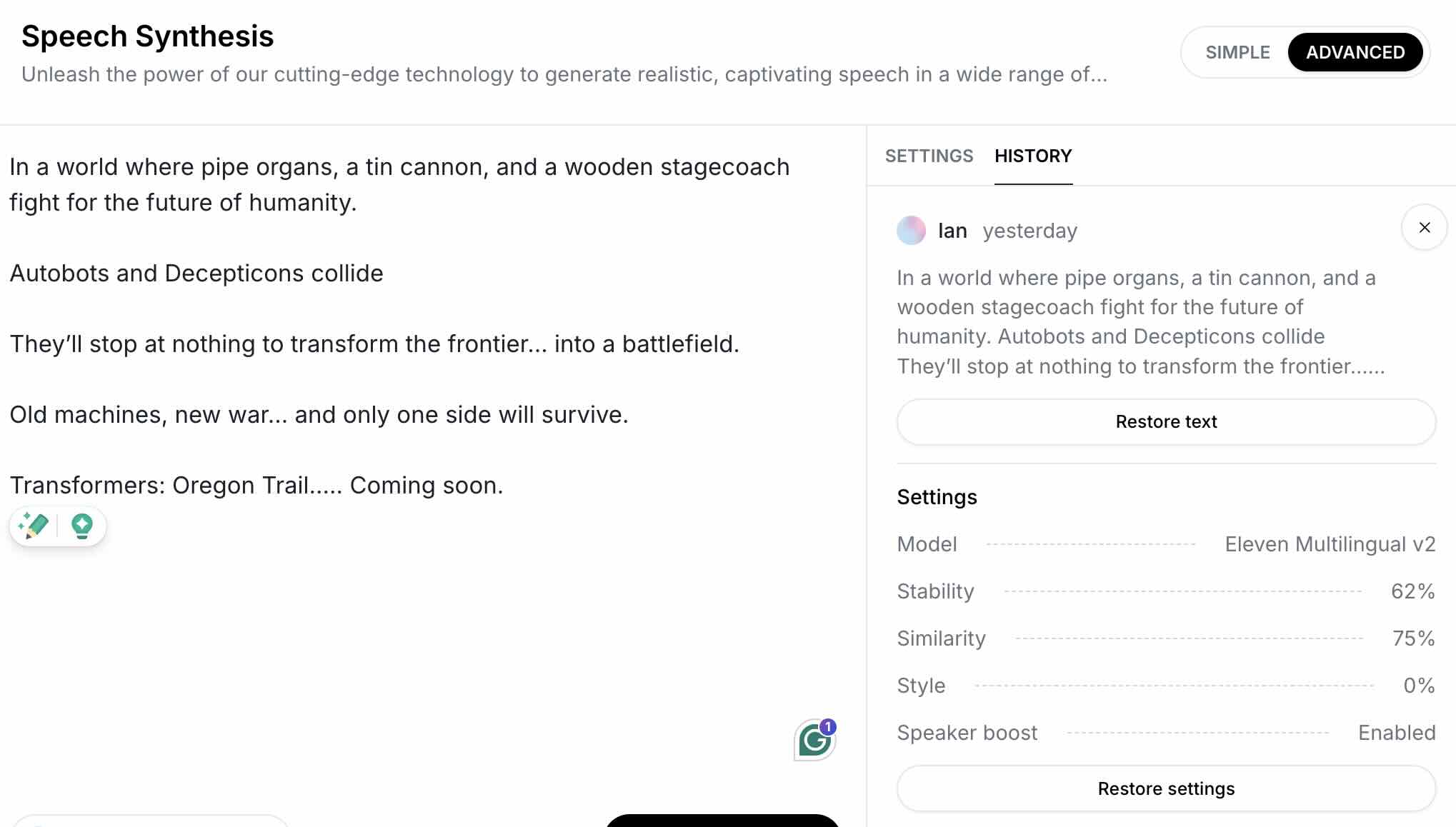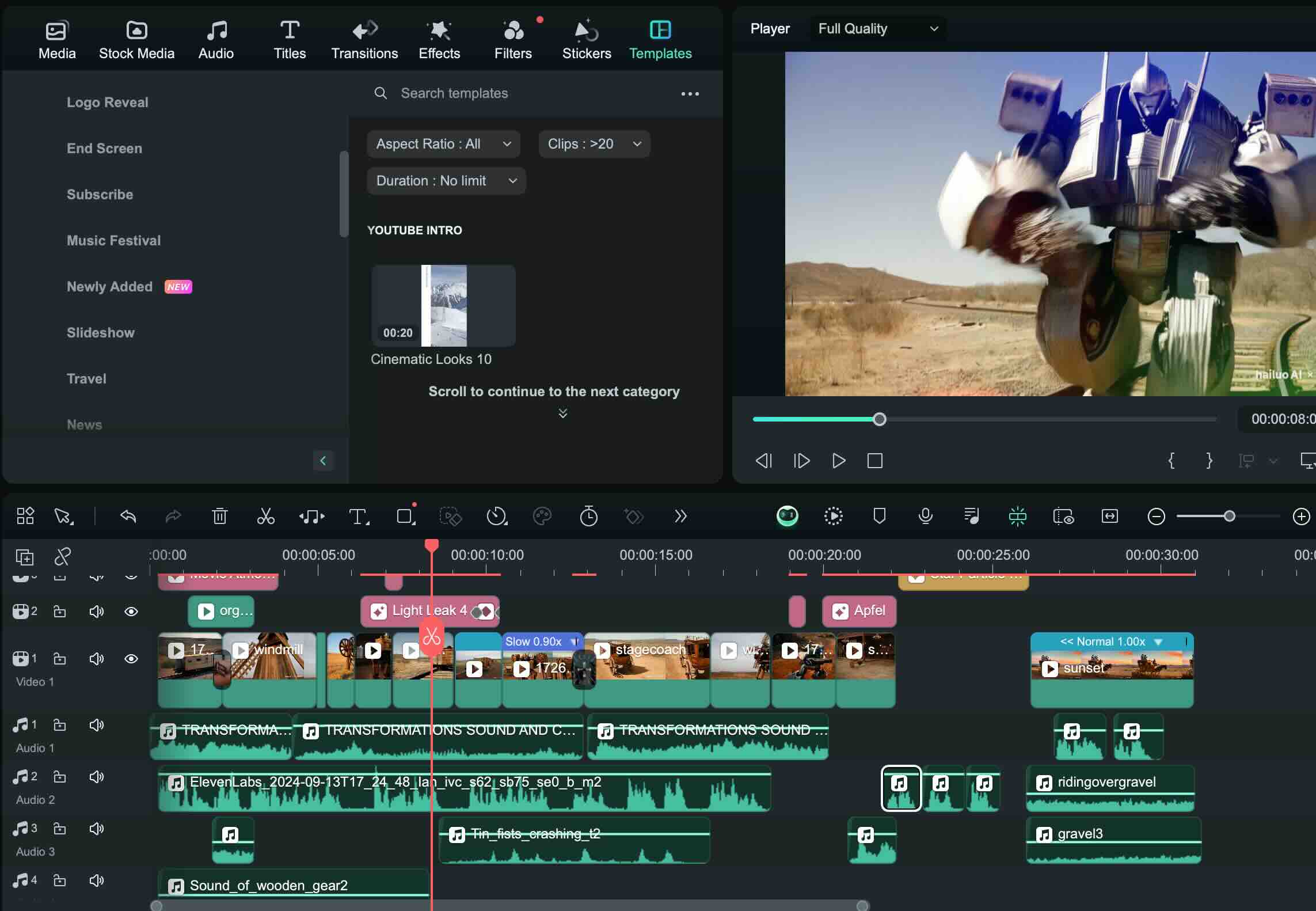How I Created a 30-Second AI-Generated Prequel Trailer for Transformers in Just Two Hours
In a world where AI tools meet creativity, I recently completed a project that would have been impossible to make just two years ago—a 30-second trailer for a prequel of Transformers titled Transformer Oregon Trail.
Imagine the Autobots and Decepticons battling it out in the 1800s, with wooden stagecoaches, pipe organs, and tin cannons instead of modern vehicles and weapons. This outrageous take on the somewhat beloved franchise blends AI technology with a twist. Let me walk you through how I brought this to life using tools that have revolutionized the creative process and need zero coding and much less editing.
Step 1: Crafting the Script
The script is the backbone of any trailer, and for this project, I wanted to combine nostalgia with humor. Here’s the final version:
“In a world where pipe organs, a tin cannon, and a wooden stagecoach fight for the future of humanity. Autobots and Decepticons collide. They’ll stop at nothing to transform the frontier… into a battlefield. Old machines, new war… and only one side will survive. Transformers: Oregon Trail… Coming soon.”
I used a trailer-friendly voice from Eleven Labs to deliver the narration. Their AI-generated voiceover technology provides a cinematic quality to make the trailer feel professional, no matter how bad the writing is.
Step 2: Sound Effects and Music Creation
To further enhance the trailer’s old-timey yet futuristic feel, I also created sound effects on Eleven Labs. From the clanking of tin cannons to the creaking of stagecoaches, AI-generated sound effects added authenticity to the 1800s setting, while keeping the vibe playful and fun.

Step 3: Creating the Visuals with Minimax
For the visuals, I turned to Minimax, a Chinese-based website that offers free and fast video editing solutions. While more advanced AI video platforms like Runway and Luma offer higher quality, I chose Minimax due to its speed. I had the entire trailer edited and ready to go in under two hours.
Minimax is a great tool for those looking to create quick videos. At this time the length of the MiniMax is just 6 seconds and not extendable. While platforms like Luma take a day to render videos, Minimax completed the task in minutes.
Step 4: Final Edits in Wondershare Filmora
Once I had all the pieces—script, voiceover, sound effects, and visuals—I used Wondershare Filmora to finalize the editing. Filmora’s simple, user-friendly interface allowed me to quickly piece together all the elements. It’s perfect for quick touch-ups and final adjustments, saving time and streamlining the whole process with lots of templates and titles.

Step 5: Publishing the Video
After just two hours of work, the trailer was ready to publish. The result was an AI-powered 30-second Transformers prequel. With the help of AI tools like Eleven Labs and Minimax, I was able to complete a project that would have taken days or even weeks just a few years ago.
Why AI Tools Are Revolutionizing Film Creation
The Transformer Oregon Trail trailer showcases how accessible AI technology is opening, again up new creative possibilities. Here are some key takeaways:
- Speed and Efficiency: AI tools like Minimax offer rapid results, cutting down production time significantly. What once took days can now be done in hours.
- Cost-Effective Solutions: Free platforms like Minimax, combined with affordable editing software like Filmora, make creating high-quality videos accessible to everyone, not just professionals with massive budgets. Runway is me
- Creativity Unleashed: AI allows creators to push the boundaries of what’s possible, mixing old and new ideas in unique ways. In this case, I combined 1800s aesthetics with futuristic AI technology to tell a fresh, funny story.
The project I completed—Transformer Oregon Trail—is a testament to the incredible possibilities that AI offers today. I had a stupid idea and instead of taking weeks to translate a dumb thought into a terrible product, it took two hours. From voiceovers to video editing, AI-powered tools make it easier than ever to bring creative ideas to life. I realize I’m a videographer but if you’re looking to create a fun, engaging video that includes a lot of special FX I recommend experimenting with these apps.
Check out my post comparing two AI video creation apps Luma and Runway.

Christopher lives in Vermont with his wife, twin boys, border collie and corgi. He has owned a film production company, sold slot machines, and worked for Tony Robbins. He writes in his magical tiny house and sometimes writes in his blog at chrisrodgers.blog
Visit his author’s page.